If three families occupy one house the whale’s rib which forms the window is placed a few feet farther forward than in the previous case, at the end of the large slab which forms the roof of the last part of the passage.
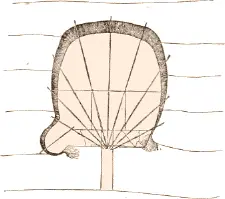
Fig. 499. Plan of large qarmang or stone house for three families.
By means of poles and bones a small side room is built (qareang), the ceiling of which is sewed to that of the main room (Fig. 499). The large slab which is in front of the window (at the end of the passage) is utilized as a storeroom for both families living on that side of the house, a place being left open only in the middle, where the spy hole is. In some instances this side room is inclosed in the stone walls of the hut.
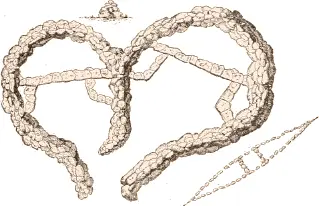
Fig. 500. Plan of stone house in Anarnitung, Cumberland Sound. (From a drawing by L. Kumlien.)
Fig. 500 and Fig. 501 present sketches of plans of some of these houses. From such sketches it appears that several houses might have a common entrance.

Fig. 501. Plan of group of stone houses in Pangnirtung, Cumberland Sound.
In Anarnitung I observed no passage at all for the houses, the walls being entirely above the ground and piled up with bowlders and sod. They are, however, covered in the same way as the others and the entrance is made of snow.

Fig. 502. Plan and sections of qarmang or house made of whale ribs.
A winter house built on the same plan is represented in Fig. 502. The wall is made entirely of whale ribs, placed so that their ends cross one another. The poles are tied over the top of the ribs and the whole frame is covered with the double roof described above. A few narrow snow vaults form the entrance. The front rib forms the door, and thus the hut becomes quite dark. Huts of this kind are also called qarmang or qarmaujang, i.e., similar to a qarmang.
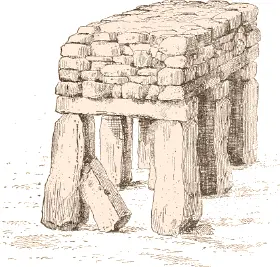
Fig. 503. Storehouse in Ukiadliving. (From a sketch by the author.)
In Ukiadliving I found, along with a great number of fine qarmat, some very remarkable storehouses, such as are represented in Fig. 503. Structures of this kind (ikan´) consist of heavy granite pillars, on the top of which flat slabs are piled to a height of from nine to ten feet. In winter, blubber and meat are put away upon these pillars, which are sufficiently high to keep them from the dogs. Sometimes two pillars, about ten feet apart, are found near the huts. In winter the kayak is placed upon them in order to prevent it from being covered by snowdrifts or from being torn and destroyed by the dogs. In snow villages these pillars are made of snow.
The purpose of the long, kayak-like building figured by Kumlien (see Fig. 500) is unknown to me. I found a similar one, consisting of two rows of stones, scarcely one foot high but twenty feet long, in Pangnirtung, Cumberland Sound, but nobody could explain its use.
In the spring, when the rays of the sun become warmer, the roofs of the snow houses fall down. At this season the natives build only the lower half of a snow vault, which is covered with skins.
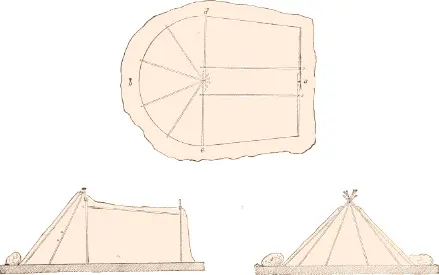
Fig. 504. Plan and sections of tupiq or tent of Cumberland Sound.
Still later they live in their tents (tupiq) (Fig. 504). The framework consists of poles, which are frequently made of many pieces of wood ingeniously lashed together. The plan (Fig. 504 a ) is the same as that of the winter houses. At the edge of the bed and at the entrance two pairs of converging poles are erected. A little below the crossing points two cross strips are firmly attached, forming the ridge. Behind the poles, at the edge of the bed, six or eight others are arranged in a semicircle resting on the ground and on the crossing point of those poles. The frame is covered with a large skin roof fitting tightly. The back part, covering the bed, is made of sealskins; the fore part, between the two pairs of poles, of the thin membrane which is split from the skins (see p. 519), and admits the light. The door is formed by the front part of the cover, the left side (in entering) ending in the middle of the entrance, the right one overlapping it, so as to prevent the wind from blowing into the hut. The cover is steadied with heavy stones (Fig. 504 c ). In Cumberland Sound and the more southern parts of Baffin Land the back of the hut is inclined at an angle of 45°; in Davis Strait it is as steep as 60°, or even more. In the summer tent the bed and the side platforms are not raised, but only separated from the passage by means of poles.
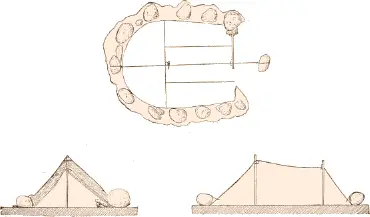
Fig. 505. Plan and sections of tupiq or tent of Pond Bay.
Farther north and west, in Pond Bay, Admiralty Inlet, and Iglulik, where wood is scarce, the Eskimo have a different plan of construction (Fig. 505). A strong pole is set up vertically at the end of the passage, a small cross piece being lashed to its top. The entrance is formed by an oblique pole, the end of which lies in the ridge of the roof. The latter is formed by a stout thong which runs over the top of both poles and is fastened to heavy stones on both sides. If wood is wanting, then poles are made from the penis bones of the walrus. Parry found one of these tents at River Clyde, on his first expedition, and describes it as follows (I, p. 283):
The tents which compose their summer habitations, are principally supported by a long pole of whalebone, 14 feet high, standing perpendicularly, with 4 or 5 feet of it projecting above the skins which form the roof and sides. The length of the tent is 17, and its breadth from 7 to 9 feet, the narrowest part being next the door, and widening towards the inner part, where the bed, composed of a quantity of the small shrubby plant, the Andromeda tetragona , occupies about one-third of the whole apartment. The pole of the tent is fixed where the bed commences, and the latter is kept separate by some pieces of bone laid across the tent from side to side. The door which faces the southwest, is also formed of two pieces of bone, with the upper ends fastened together, and the skins are made to overlap in that part of the tent, which is much lower than the inner end. The covering is fastened to the ground by curved pieces of bone, being generally parts of the whale.
This kind of tent differs from the one described by me only in the construction of its door.
I could not find a description of the tent of the Hudson Bay Eskimo. There is only one illustration in Klutschak (p. 137) and one in Ross (II, p. 581) representing tents of the Netchillirmiut. In the former there are a few conical tents, such as are used by the eastern tribes before a sufficient number of skins for a large tent can be procured. The same kind is represented in Ross’s book. The other tent drawn by Klutschak is similar to the Iglulik one, but the arrangement of the poles in the back part is invisible. The entrance is formed by two converging poles and a rope runs over the ridge and is tied to a rock.
Читать дальше



















